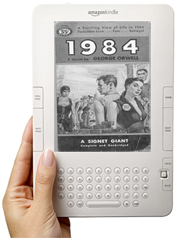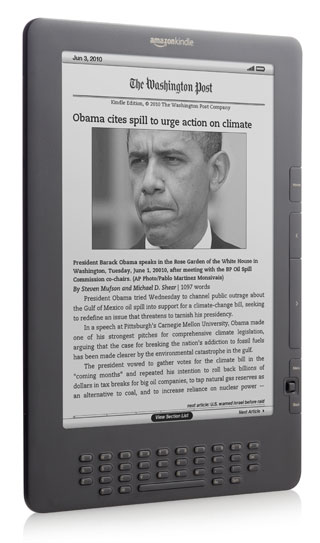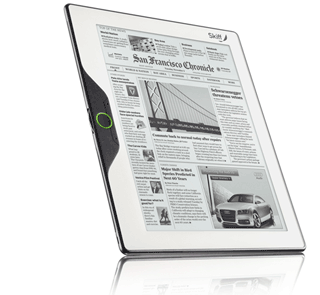 Say what you will about the tactile pleasure of a hardcover book, but Amazon customers are choosing to read on their Kindles.
Say what you will about the tactile pleasure of a hardcover book, but Amazon customers are choosing to read on their Kindles.
For every 100 hardcover books Amazon sold over the last three months, the retailer sold 143 Kindle books. In the last month, the pace has jumped to 180 Kindle books for every 100 hardcovers. Kindle book sales have tripled in the first half of 2010, compared to the same period last year.
Keep in mind that Amazon isn’t talking about paperbacks, so I’m assuming those still outsell e-books. But Amazon also counts hardcovers even if there isn’t a Kindle edition, and doesn’t count free, out-of-copyright Kindle books.
Amazon chief executive Jeff Bezos says the rise in Kindle books over hardcovers is “astonishing when you consider that we’ve been selling hardcover books for 15 years, and Kindle books for 33 months.” I say it’s more astounding given that anyone can purchase a hardcover from Amazon, but only Kindle owners or Kindle software users have use for an e-book.
I hope book publishers are encouraged, not frightened, by the news. They should be converting books into electronic form faster than ever to capitalize on the e-reader craze. But they might also liken e-books to paperbacks — both are less profitable than hardcovers — by delaying the digital versions to drum up hardcover sales.
Delaying the digital version of books is a bad move because there’s nothing comparable to hardcovers available in digital form. If publishers want to charge more for new releases — and they can with the agency model, which allows several major publishers to set their own e-book prices — that’s fine. But as Amazon’s latest numbers show, Kindle owners are determined to build their e-book libraries, and publishers should do everything they can not to hold those readers back.

 A little over a year ago, Amazon.com released the Kindle DX–an e-reader with a big 9.7″ display and a big $489 pricetag. The DX hasn’t changed since then, but the world around it sure has. For one thing, the price premium over the smaller Kindle keeps growing–it started out costing $130 more, but
A little over a year ago, Amazon.com released the Kindle DX–an e-reader with a big 9.7″ display and a big $489 pricetag. The DX hasn’t changed since then, but the world around it sure has. For one thing, the price premium over the smaller Kindle keeps growing–it started out costing $130 more, but 
 When Kindle books debuted back in 2007, they contained only words and grainy black-and-white photos. Last year, they got color pictures when they
When Kindle books debuted back in 2007, they contained only words and grainy black-and-white photos. Last year, they got color pictures when they  Amazon has released its Kindle for Mac software, letting OS users get at all those e-books in Kindle format. It should be a boon to anyone who has a Kindle, has bought books for it, and wants to read ’em on a Mac–but I’m on the road sans Mac at the moment, so it’ll be a few days until I can try it for myself. If you snag it, let us know what you think.
Amazon has released its Kindle for Mac software, letting OS users get at all those e-books in Kindle format. It should be a boon to anyone who has a Kindle, has bought books for it, and wants to read ’em on a Mac–but I’m on the road sans Mac at the moment, so it’ll be a few days until I can try it for myself. If you snag it, let us know what you think.

 Among the gazillion products making their debut this week at the Consumer Electronics Show:
Among the gazillion products making their debut this week at the Consumer Electronics Show: